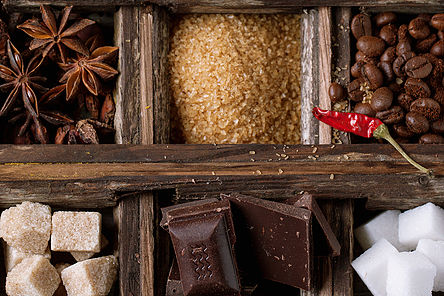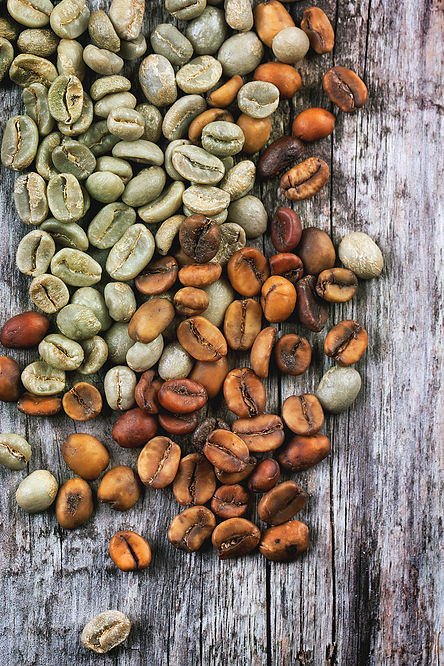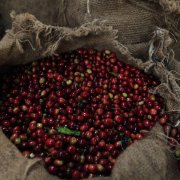Coffee production area Guide: Kenya's unique double fermentation treatment and the world-famous SL28&34

For professional baristas, please follow the coffee workshop (Wechat official account cafe_style)
Many predecessors in the industry have already elaborated on the knowledge of coffee producing areas, and even advanced people have gone to famous producing areas of various countries in person to participate in cup testing and audition for the introduction of quality items into Taiwan, which is really a blessing for Taiwan consumers. Here, I would like to briefly explain the major coffee producing areas and important varieties in the world from another perspective.
Coffee originated in the highlands of Ethiopia's Kaffa province. According to the story of Italian writer Nayron Nairon, the origin of coffee was discovered by the excited dance of the shepherd boy Goatherd Kaldi after seeing his sheep eating the red fruit on the bushes.
Later, Ethiopian troops invaded Yemen and brought coffee to Yemen, which began the history of coffee cultivation in Yemen. In 1690, a Dutch captain brought coffee seedlings from Yemen to the Dutch East India to plant successfully. In 1727, a Spaniard in Brazil brought a batch of coffee seeds from Dutch Guiana to Brazil, and the coffee was successfully planted. From then on, coffee entered the American continent.
There are many different versions of the story of the origin of coffee, which may be used as an after-dinner anecdote. However, tangerine and trifoliate orange, the migration process of various coffee varieties around the world, as well as the differences in coffee drinking habits of consumers in different countries, have indeed created different coffee flavors and different coffee cultures in different regions.

Most of the coffee producing areas in the world are located between the Tropic of Cancer called the coffee belt (Coffee belt). The main producing areas are divided into several famous independent regions such as Africa, America, Asia and Hawaii. The countries with the longest history of coffee cultivation are Ethiopia, Yemen and India, especially Ethiopia, in addition to the most interesting regions of Yegashafi and Sidamo, there are thousands of different coffee varieties in the plateau region, which is not only the birthplace of coffee in the world, but also the richest variety bank. Ethiopia has the longest history of tanning coffee, and its coffee has obvious berry and citrus aromas.
Another coffee-rich country in Africa is Kenya, which is neighboring to Ethiopia, but they are poles apart in terms of coffee varieties and treatments. Ethiopia is rich in a wide variety of Herilooms, while Kenya is the most delicious SL28 & SL34 selected by scientific breeding, which was cultivated and named by the "Scott Laboratories" laboratory in 1930 AD. SL28 has the blood of French missionaries, Mocha and Yemeni Tibica. It has distinct flavors of citrus and black plum. In addition to the complex and changeable sour and sweet finish, SL34 is heavier, more full-bodied and cleaner than SL28.
A good SL28&SL34 combination has bright acid value aromas of lemon and strawberry and thick aromas of black plum and herbs, and some producing areas can even produce Umami taste similar to tomato or fermented fruit flavor with mango flavor. In addition to SL28 and SL34, other well-known Kenyan varieties include K7, which belongs to the Typica variety, and Ruiru11, which has the Robusta gene.
At present, the most famous boutique bean producing area in Kenya is Nyeri, as well as Ruiri, Thika, Kirinyaga and Mt. Kenya West, Kiambu and Muranga. Kenyan coffee is graded according to particle size and flavor. The particle sizes of AA, AB and PB,AA are 17 and 18 mesh, AB is 15 and 16 mesh, and PB is round bean (Peaberries). The flavor grade is TOP, PLUS, FAQ (Fair to Average Quality) in order.

In addition to the special varieties, Kenya's post-processing approach is also very different from that of neighboring Ethiopia. In the way of double fermentation (Double Fermentation), the upper tank is used to ferment the shell bean for one night, and the next day the shell bean is put into the lower purifying pool for secondary fermentation.
Kenyan coffee is a bit polarized in the market. Some friends don't like Kenya's straightforward and straightforward acid value, while others don't like its obvious ebony texture after it cools down. However, there are also friends who have tasted all kinds of coffee flavors and only like the bright and hearty sour flavor of Kenya. If you can find Bole who knows how to control Kenyan beans, stretch the baking depth a little longer to make the caramelization reaction more obvious, not only moderate sweet and sour, but also delicious and hearty; even, if you can mix and make SOE with different baking degrees, this is definitely a good taste that coffee glutton should not miss!
Important Notice :
前街咖啡 FrontStreet Coffee has moved to new addredd:
FrontStreet Coffee Address: 315,Donghua East Road,GuangZhou
Tel:020 38364473
- Prev

Introduction of Origin Information of Bourbon Coffee Flavor treated with Honey at Santa Elena Manor in El Salvador
For professional baristas, please follow the Coffee Workshop (official Wechat account cafe_style) Finca Santa Elena Bourbon Honey country: El Salvador name: Santa Elena Manor Honey treatment production area: Santa Ana Volcano Grade: SHG treatment: honey treatment altitude: 1850m Variety: Bourbon Santa Elena Manor Bourbon Honey treatment Flavor description: dried fruit, Maple
- Next

Introduction of famous coffee producing areas, processing plants and producers' cooperatives in Ethiopia
For professional baristas, please follow the coffee workshop (Wechat official account cafe_style) Ethiopia is the birthplace of Arabica coffee and has the most diverse variety on earth. The main producing areas are Sidama, Yirgacheffe, Kochere, Harar, and Djimmah (there are many English place names in Ethiopia.
Related
- Detailed explanation of Jadeite planting Land in Panamanian Jadeite Manor introduction to the grading system of Jadeite competitive bidding, Red bid, Green bid and Rose Summer
- Story of Coffee planting in Brenka region of Costa Rica Stonehenge Manor anaerobic heavy honey treatment of flavor mouth
- What's on the barrel of Blue Mountain Coffee beans?
- Can American coffee also pull flowers? How to use hot American style to pull out a good-looking pattern?
- Can you make a cold extract with coffee beans? What is the right proportion for cold-extracted coffee formula?
- Indonesian PWN Gold Mandrine Coffee Origin Features Flavor How to Chong? Mandolin coffee is American.
- A brief introduction to the flavor characteristics of Brazilian yellow bourbon coffee beans
- What is the effect of different water quality on the flavor of cold-extracted coffee? What kind of water is best for brewing coffee?
- Why do you think of Rose Summer whenever you mention Panamanian coffee?
- Introduction to the characteristics of authentic blue mountain coffee bean producing areas? What is the CIB Coffee Authority in Jamaica?

